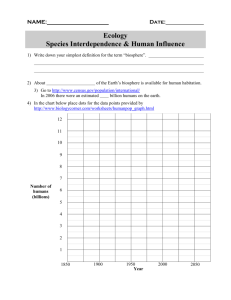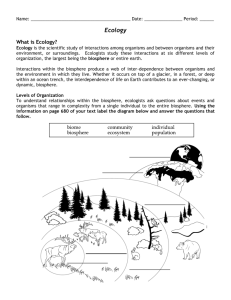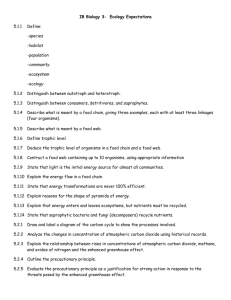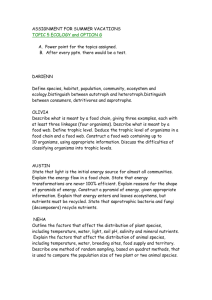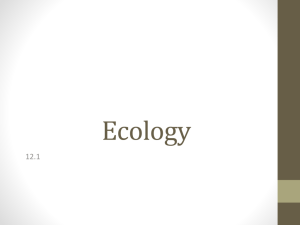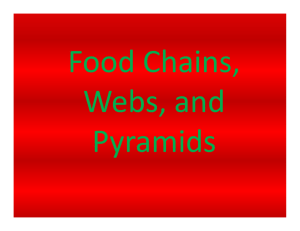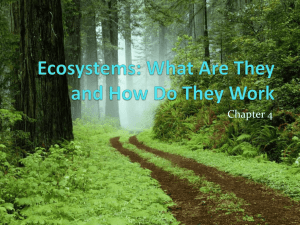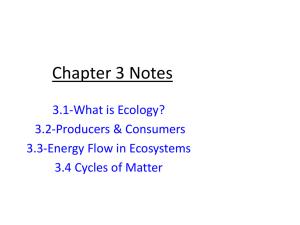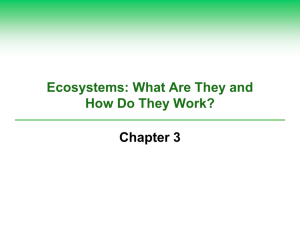Chapter 4: Principles of Ecology: How Ecosystems Work
advertisement
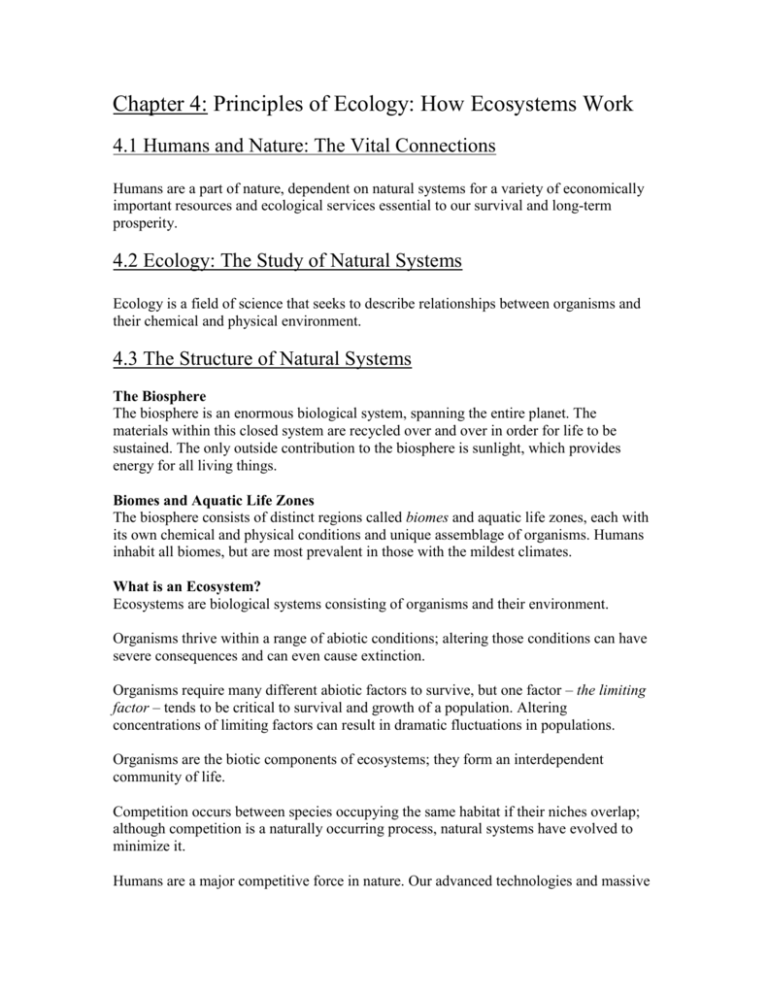
Chapter 4: Principles of Ecology: How Ecosystems Work 4.1 Humans and Nature: The Vital Connections Humans are a part of nature, dependent on natural systems for a variety of economically important resources and ecological services essential to our survival and long-term prosperity. 4.2 Ecology: The Study of Natural Systems Ecology is a field of science that seeks to describe relationships between organisms and their chemical and physical environment. 4.3 The Structure of Natural Systems The Biosphere The biosphere is an enormous biological system, spanning the entire planet. The materials within this closed system are recycled over and over in order for life to be sustained. The only outside contribution to the biosphere is sunlight, which provides energy for all living things. Biomes and Aquatic Life Zones The biosphere consists of distinct regions called biomes and aquatic life zones, each with its own chemical and physical conditions and unique assemblage of organisms. Humans inhabit all biomes, but are most prevalent in those with the mildest climates. What is an Ecosystem? Ecosystems are biological systems consisting of organisms and their environment. Organisms thrive within a range of abiotic conditions; altering those conditions can have severe consequences and can even cause extinction. Organisms require many different abiotic factors to survive, but one factor – the limiting factor – tends to be critical to survival and growth of a population. Altering concentrations of limiting factors can result in dramatic fluctuations in populations. Organisms are the biotic components of ecosystems; they form an interdependent community of life. Competition occurs between species occupying the same habitat if their niches overlap; although competition is a naturally occurring process, natural systems have evolved to minimize it. Humans are a major competitive force in nature. Our advanced technologies and massive population size permit us to outcompete many species. Destroying other species through competition, however, can be disadvantageous in the long run. 4.4 Ecosystem Function Photosynthetic organisms such as plants and algae produce food within ecosystems. Their well-being is essential to the survival and well-being of all other species. Food Chains and Food Webs Food and energy flow through food chains that are part of much larger food webs in ecosystems. The Flow of Energy and Nutrients Through Food Webs Food chains are biological avenues for the flow of energy and the cycling of nutrients in the environment. Energy flows in one direction through food chains, but nutrients are recycled. Trophic Levels The position of an organism in a food chain is called its trophic level. Producers are on the first trophic level. Herbivores are on the second level. Carnivores are on the third level. The length of a food chain is limited by the loss of energy from one trophic level to another. The largest number of organisms is generally supported by the base of the food chain, the producers. Nutrient Cycles Nutrients are recycled in global nutrient cycles. In these cycles, nutrients alternate between organisms and the environment. Humans can disrupt nutrient cycles in many ways, with profound impacts on ecosystems and our own future. The carbon cycle is vital to the survival of the Earth’s many species. It is the basis of food and energy production in the living world. It is also vital to maintaining global temperature. The carbon cycle is currently being flooded with excess carbon dioxide as a result of the combustion of fossil fuels and deforestation, which could have devastating effects on climate and ecosystems.

